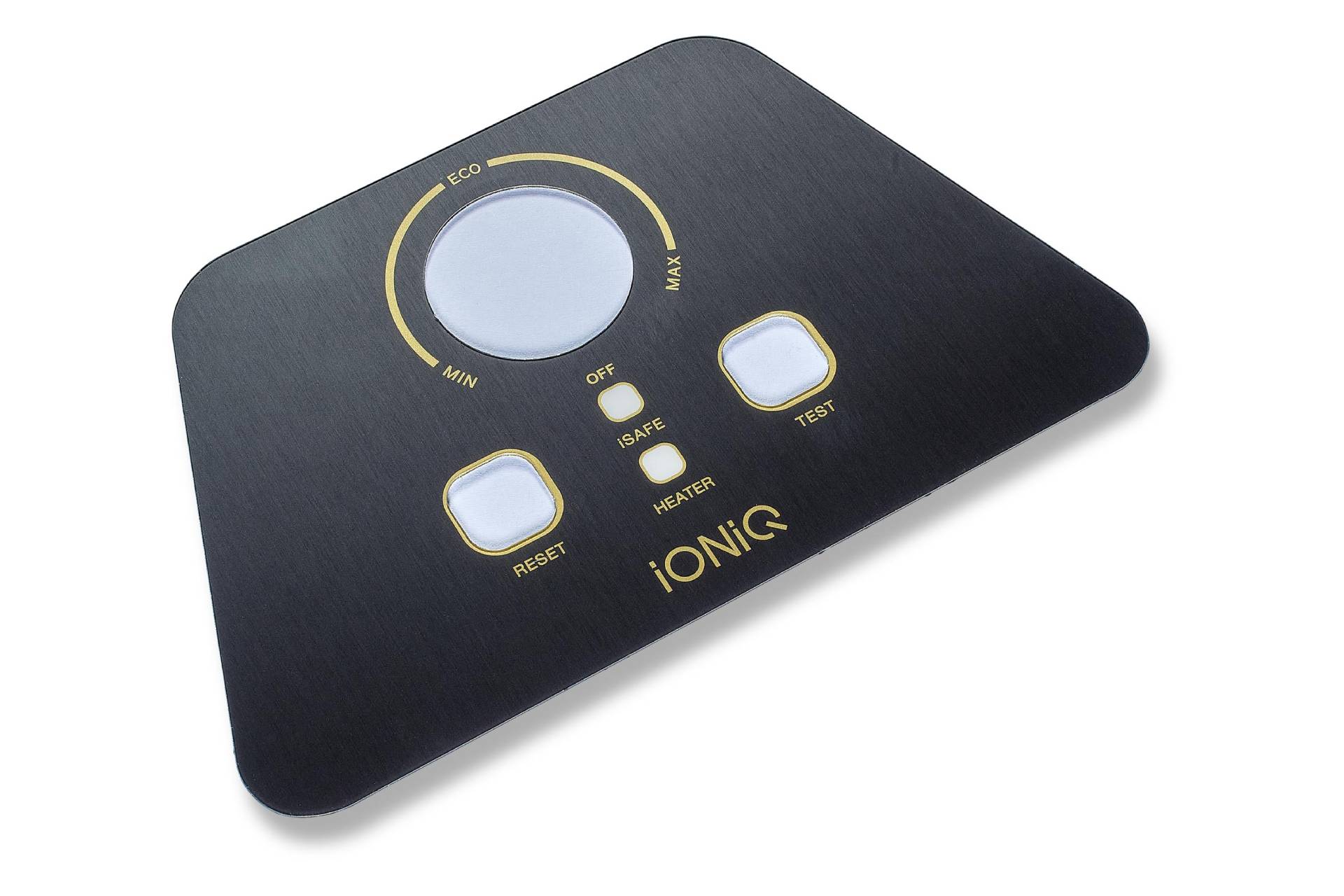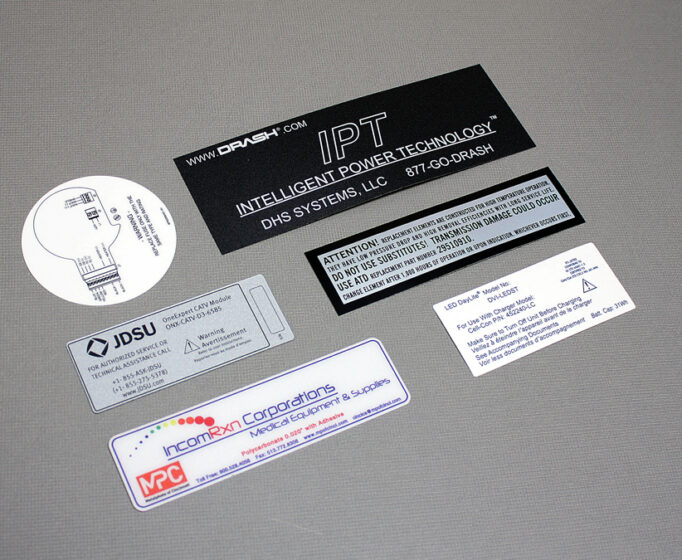Comprehending Exactly How Plastic Nameplates Job: Insights Into Their Functionality and Benefits
Plastic nameplates are essential devices for recognition and interaction in numerous atmospheres. Built from sturdy materials like acrylic and PVC, they use both resilience and visual appeal. Various printing strategies enhance their presence and branding potential. Recognizing their performance discloses not just their functional applications but also the benefits they offer organizations. As industries develop, the duty of plastic nameplates may move, prompting a more detailed look at their recurring relevance and innovation.
The Materials Behind Plastic Nameplates
Plastic nameplates are crafted from a range of materials, each chosen for its distinct residential or commercial properties and viability for different applications. Usual products consist of acrylic, polycarbonate, and PVC, each offering distinct benefits. Acrylic is preferred for its clarity and light-weight nature, making it optimal for interior usage and display screen functions. Polycarbonate, known for its high impact resistance, is usually picked for environments where sturdiness is vital (Plastic Nameplates). PVC, on the other hand, supplies an economical solution with decent weather resistance, ideal for outside applications.Additionally, the selection of product can influence factors such as color retention, convenience of printing, and general aesthetic charm. This selection procedure guarantees that the end product meets certain needs, whether for branding, identification, or attractive purposes. Comprehending the homes of these products helps in making informed decisions when picking plastic nameplates for different demands
Manufacturing Processes of Plastic Nameplates
The manufacturing procedures of plastic nameplates encompass a number of crucial steps that assure high quality and durability. Key facets consist of product selection techniques, various printing methods, and ending up and finish alternatives. Comprehending these elements is crucial for creating reliable and aesthetically pleasing nameplates.
Product Choice Techniques
Picking the appropriate materials for producing plastic nameplates is crucial for making certain toughness, aesthetic allure, and capability. Numerous plastic types are readily available, each offering distinct residential or commercial properties matched for various applications. Polyvinyl chloride (PVC) is prominent for its affordability and resistance to environmental variables, making it perfect for exterior usage. Acrylonitrile butadiene styrene (ABDOMINAL) supplies improved effect resistance and is often chosen for its remarkable strength and flexibility. In addition, polycarbonate is favored for applications needing openness and high influence resistance. The option process involves considering factors such as the meant use, ecological direct exposure, and wanted aesthetic top qualities. Eventually, careful material option considerably affects the performance and durability of plastic nameplates, providing to diverse market needs.
Printing Approaches Introduction
Material choice lays the groundwork for the subsequent printing approaches utilized in generating plastic nameplates. Various methods, such as screen printing, digital printing, and pad printing, are employed to accomplish resilient surfaces and premium designs. Display printing is favored for its ability to create lively shades and is suitable for big runs. Digital printing, on the other hand, offers flexibility and precision, making it ideal for smaller orders with variable information or detailed layouts. Pad printing permits the transfer of images onto unequal surfaces, suiting intricate forms. Each printing approach adds distinctly to the end product's look and longevity, making certain that the nameplates properly convey the intended message and hold up against environmental elements.
Completing and Coating Options
Ending up and finish choices play a crucial role in improving the longevity and visual appeal of plastic nameplates. Different methods, such as UV coating, give a safety layer that withstands scratches and fading, greatly prolonging the product's lifespan. Furthermore, laminating options can provide a glossy or matte finish, permitting customization to match branding needs. Electroplating and anodizing are additionally preferred techniques, adding a metal sheen while boosting rust resistance. These coatings not just boost look however also add to the nameplate's functionality by securing against environmental variables. Specialized surfaces, such as anti-graffiti coatings, warranty that nameplates keep their legibility and aesthetic charm in difficult problems. Consequently, the best finishing and finish selections can considerably improve the overall worth of plastic nameplates.
Layout Options for Personalization
While discovering design options for modification, one discovers a vast array of possibilities that can boost the practical and visual appeal of plastic nameplates. Color option is a primary consideration, as dynamic hues can bring in focus while neutral tones promote professionalism and trust. Different font choices and dimensions additionally personalize nameplates, ensuring legibility and positioning with brand identity.Incorporating logos or photos adds an unique touch, enhancing business branding. In addition, form personalization enables for special layouts, varying from conventional rectangles to more detailed types, accommodating particular themes or environments.Textures such as matte or glossy coatings can additionally affect the general appearance, giving a tactile measurement. Additionally, the assimilation of decorative components like boundaries or backgrounds boosts visual rate of interest. These modification choices jointly enable organizations to develop plastic nameplates that successfully communicate their identity and message while fulfilling functional demands.

Longevity and Durability of Plastic Nameplates
Although many elements affect the durability of plastic nameplates, the choice of product and manufacturing processes plays a substantial function in their longevity. Top quality plastics, such as polycarbonate and acrylic, are typically picked for their inherent resistance to weather condition, effect, and uv radiation. These materials can stand up to rough ecological conditions without considerable destruction, guaranteeing that nameplates stay undamaged over time.Furthermore, advanced production strategies, such as injection molding and laser inscription, add to the robustness of plastic nameplates. These processes create resilient and precise engravings that withstand fading and wear. Additionally, safety finishings may be put on improve resistance to scratches and chemicals, even more prolonging their lifespan.Ultimately, the combination of top quality materials and efficient manufacturing procedures assures that plastic nameplates maintain their functionality and appearance for several years, making them a dependable option for different applications.
Applications Throughout Different Industries
Plastic nameplates offer a range of crucial functions throughout various industries. They are commonly utilized for industrial devices identification, guaranteeing clear labeling for safety and operational performance. Additionally, they supply effective office signs remedies and play a vital duty in safety and conformity markings, highlighting their versatility and significance in varied settings.
Industrial Tools Recognition
Efficient industrial equipment identification is crucial throughout various fields, as it ensures security, efficiency, and compliance with regulatory requirements. Plastic nameplates offer as a vital device in this process, supplying durable and clear recognition for machinery and devices. Industries such as production, building and construction, and energy utilize these nameplates to present vital info, consisting of operating guidelines, risk cautions, and maintenance timetables. Their resilience to harsh environments assurances that important information remains easily accessible, minimizing the threat of crashes and operational downtime. In addition, adjustable functions enable branding and particular classifying needs, making plastic nameplates functional across applications. On the whole, efficient tools identification through plastic nameplates cultivates a much safer workplace while enhancing performance in diverse industrial settings.
Office Signage Solutions

In various industries, the importance of clear communication expands beyond commercial tools to office atmospheres where signs plays a vital role. Plastic nameplates work as effective office signs remedies, giving essential info such as employee names, job titles, and departmental classifications. These nameplates boost professionalism and cultivate an inviting ambience, helping both team and site visitors in navigating the work area. Furthermore, they use personalization choices, allowing companies to align signs with branding and visual choices. In settings like medical facilities, educational institutions, and company offices, resilient and clear signage warranties reliable communication and adds to business efficiency. Ultimately, the use of plastic nameplates in office environments not only improves clearness however likewise promotes a cohesive and well organized work space.
Safety and Conformity Markings
While many businesses prioritize visual appeals and branding in their compliance, signs and safety and security markings are similarly crucial throughout different sectors. These markings serve as important devices for interaction, guaranteeing that employees and customers understand potential threats, security methods, and regulatory demands. In production, as an example, plastic nameplates often present alerting labels and usage instructions to mitigate threats. In health care, conformity signs informs workers about health practices and equipment usage, consequently advertising a safe atmosphere. Furthermore, the resilience of plastic nameplates her explanation makes them appropriate for different look at more info setups, resisting wear and tear from environmental elements. Overall, safety and compliance markings improve functional effectiveness, promote wellness, and warranty adherence to sector criteria, making them essential in contemporary workplaces.
Benefits of Using Plastic Nameplates
Various benefits make plastic nameplates an appealing selection for businesses and companies. One key benefit is their sturdiness; plastic nameplates are immune to fading, wetness, and different environmental factors, ensuring longevity in varied setups. Furthermore, they are lightweight, making them very easy to install and transfer as needed.Cost-effectiveness is an additional substantial advantage. Plastic nameplates usually require reduced production expenses compared to steel or timber alternatives, allowing organizations to maintain spending plans while attaining professional branding. Their convenience likewise attracts attention, as they can be customized in numerous shapes, dimensions, and colors to match branding requirements.Furthermore, plastic nameplates can be quickly printed with high-resolution styles, promoting clear visibility and efficient communication. Ultimately, they are commonly made from recyclable products, lining up with environmentally conscious practices. These mixed benefits improve the functionality and allure of plastic nameplates for a variety of applications in various industries.

Tips for Picking the Right Nameplate for Your Demands
Choosing the best nameplate can considerably boost a company's branding and interaction initiatives. To make a notified decision, one have to initially take into consideration the material. Plastic nameplates provide durability and adaptability, making them suitable for different atmospheres. Next off, assess the layout elements, including dimension, shade, and font style, guaranteeing they straighten with the organization's branding guidelines.Additionally, it is important to examine the desired usage of the nameplate. If it requires to endure outdoor conditions, selecting UV-resistant options is suggested. Customization is an additional important factor; personalized nameplates can reflect uniqueness and professionalism.Lastly, budget considerations need to not be ignored. Comparing prices throughout different suppliers while factoring in high quality will aid in discovering a suitable service. By taking these aspects into account, companies can select a nameplate that successfully connects their identity and objective.
Often Asked Inquiries
Can Plastic Nameplates Be Recycled After Usage?
Plastic nameplates can be recycled, depending on the kind of plastic made use of and local recycling facilities. Appropriate disposal and recycling practices add to ecological sustainability, encouraging the decrease of plastic waste in garbage dumps.
Just how Do I Clean and Maintain My Plastic Nameplate?

Are Plastic Nameplates Waterproof or Water-Resistant?
Plastic nameplates commonly display waterproof properties, shielding them from minor moisture exposure. Long term submersion or harsh problems might jeopardize their stability. Users need to consider certain materials and finishes for enhanced waterproof capabilities when picking nameplates
What Is the Ordinary Life Expectancy of a Plastic Nameplate?
The average life expectancy of a plastic nameplate normally ranges from 5 to ten years, depending on aspects such as environmental direct exposure, material top quality, and upkeep. Routine care can extend its usability and look substantially.
Can I Order a Nameplate in a Specific Shape?
Custom shape options for nameplates are often readily available via various makers. Clients can ask for details layouts, making certain that the nameplate fulfills their visual and practical needs while keeping toughness and top quality throughout its life-span. Material choice lays the groundwork for the subsequent printing techniques used in creating plastic nameplates. Several factors influence the resilience of plastic nameplates, the selection of product and manufacturing procedures plays a significant role in their long life. These products can stand up to extreme ecological conditions without substantial destruction, ensuring that nameplates stay intact over time.Furthermore, advanced production strategies, such as injection molding and laser engraving, add to the effectiveness of plastic nameplates. Plastic nameplates why not try this out can be recycled, depending on the type of plastic made use of and regional recycling facilities. The average life expectancy of a plastic nameplate normally varies from 5 to 10 years, depending on elements such as ecological exposure, worldly top quality, and maintenance.